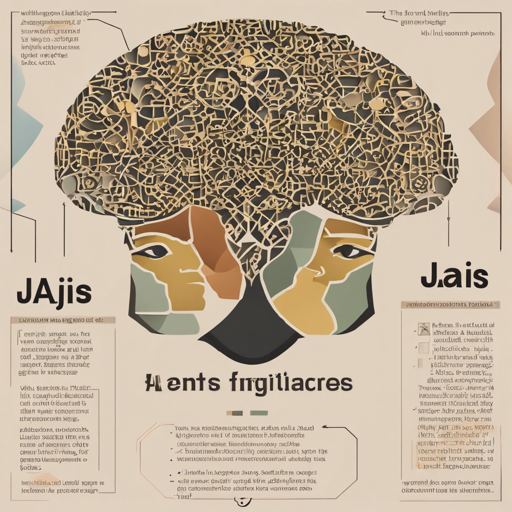If you’re looking to dive into the world of bilingual language models, the Jais family offers a robust platform to enable text generation in both Arabic and English. With an array of model sizes and capabilities, this article guides you on how to effectively use these models, troubleshoot issues you might encounter, and understand the underlying architecture that makes these models stand out.
Getting Started with Jais Family Models
The Jais family provides a range of models optimized for natural language processing (NLP) in both Arabic and English. Here’s a brief overview of how to get started with one of the models:
python
# -*- coding: utf-8 -*-
import torch
from transformers import AutoTokenizer, AutoModelForCausalLM
model_path = "inceptionaijais-family-13b"
device = "cuda" if torch.cuda.is_available() else "cpu"
tokenizer = AutoTokenizer.from_pretrained(model_path)
model = AutoModelForCausalLM.from_pretrained(model_path, device_map="auto", trust_remote_code=True)
def get_response(text, tokenizer=tokenizer, model=model):
input_ids = tokenizer(text, return_tensors="pt").input_ids
inputs = input_ids.to(device)
input_len = inputs.shape[-1]
generate_ids = model.generate(
inputs,
top_p=0.9,
temperature=0.3,
max_length=2048,
min_length=input_len + 4,
repetition_penalty=1.2,
do_sample=True,
)
response = tokenizer.batch_decode(generate_ids, skip_special_tokens=True, clean_up_tokenization_spaces=True)
return response
text = "عاصمة دولة الإمارات العربية المتحدة"
print(get_response(text))
text = "The capital of UAE is"
print(get_response(text))
Understanding the Code: An Analogy
Think of the Jais family models as a sophisticated chef in a bilingual kitchen, where each ingredient corresponds to words in either Arabic or English. In this kitchen, the chef uses specific tools (the models) to prepare delicious meals (text responses). Here’s how the parts come together:
- Ingredients (Text): Just like every recipe starts with fresh ingredients, your input text is the foundation of what the model will generate.
- Kitchen Appliances (Model): The neural network is like an advanced cooking appliance, equipped with the latest technology to blend those ingredients precisely. Each model size provides different cooking capabilities.
- Cooking Instructions (Code): This constitutes the software part, guiding the model on how to combine the ingredients step by step to generate a perfect dish (the response).
Common Troubleshooting Tips
While the Jais family models are powerful tools for text generation, you may encounter some hurdles along the way. Here are a few common issues and how to overcome them:
- Model Not Found: Ensure that the model path you provided is correct. Check if you included the correct prefix and model name.
- Out of Memory: If you experience out-of-memory errors, try using a smaller model variant or adjust the batch sizes. You can look into optimizing your GPU usage if available.
- Unexpected Output: If the output doesn’t seem logical, check the input text for errors or try rephrasing the prompt for better clarity.
For more insights, updates, or to collaborate on AI development projects, stay connected with fxis.ai.
Why Jais Models Matter
At fxis.ai, we believe that such advancements are crucial for the future of AI, as they enable more comprehensive and effective solutions. Our team is continually exploring new methodologies to push the envelope in artificial intelligence, ensuring that our clients benefit from the latest technological innovations.
With the power of bilingual models such as the Jais family, you’re better equipped to cater to Arabic speaking and bilingual communities, potentially unlocking novel applications in academia and the commercial sector.

